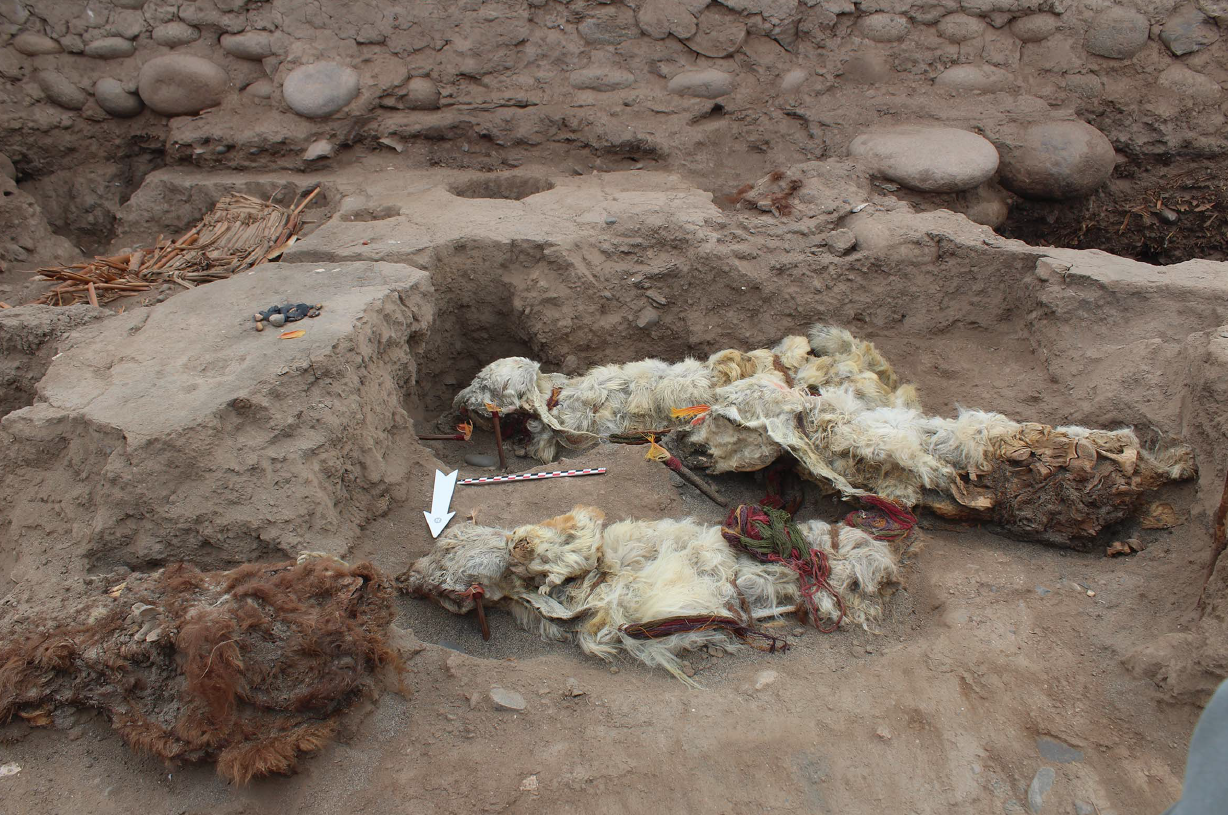A modern housewarming gift might include a nice bottle of wine or a homemade delicacy, but the ancient Inca had a very different idea of how to welcome new communities: sacrificing ornately decorated llamas.
The ancient Inca practice of sacrificing animals, and even humans, to appeal to their gods for rain, sun, or a good harvest, is well-studied by archaeologists. But researchers from the University of Calgary write in a new study that some sacrificial remains stand apart from the crowd as not just an appeasement to Incan gods, but to the empire’s newly annexed communities as well. These findings were published Thursday in the journal Antiquity.
Videos by VICE
“It is through these measures that the Inca state established and extended its control by manipulating landscapes, animals, sacred places (huacas) and, ultimately, the inhabitants,” the authors write in their paper. “In doing so, the Inca created new orders, new understandings and meanings that helped to legitimise and justify their actions to both the conquerors and the conquered.”
The remains in question are of four well-preserved (and only partially intact) mummified llamas that the research team uncovered from a site at Tambo Viejo, Peru in 2018. Even after an estimated 500 years underground, the researchers report that the llamas still maintain signs of ornate decoration, including red paint on their faces, and colored yarn and feathers on their bodies.

The discovery of a large oven at this site suggests that these sacrifices were likely accompanied by a large, community-wide celebration.
Llama sacrifices were not uncommon in this ancient civilization and could sometimes include the sacrifice of up to hundreds or even thousands of llamas to appeal to local gods for the end of drought or a good harvest. These sacrifices often included the slaughtering and consumption of the animal meat afterwards.
But for the site uncovered in this research, that wasn’t the case. Not only were these remains intact but an analysis showed no evidence of a slaughter either, which the researchers write could signify that these llamas were sacrificially buried alive.
“This new evidence demonstrates that the relationship between the Inca and livestock
extended beyond the simple provision of meat, and indicates that domesticated animals
played a key role in Inca ritual performances and political life,” the authors explain in the study.
According to Spanish records, the Inca empire was fast expanding in the early to mid-1400s, including the peaceful annexation of Tambo Viejo in the Acari Valley, which the researchers write aligns well with when this sacrifice is estimated to have taken place. As a result, they believe this may have been a political move by the Inca to make the newly acquired community feel welcome—and maybe more importantly, to ensure this community accepted the Inca as their new rulers.
“Ultimately, all of these ritual acts enabled the Inca to legitimise their presence in the Acari Valley,” the authors wrote.
The authors explain that finding evidence of a ritual sacrifice like this one at Tambo Viejo is further proof of this community’s importance to the Inca as a political center of the growing empire.




